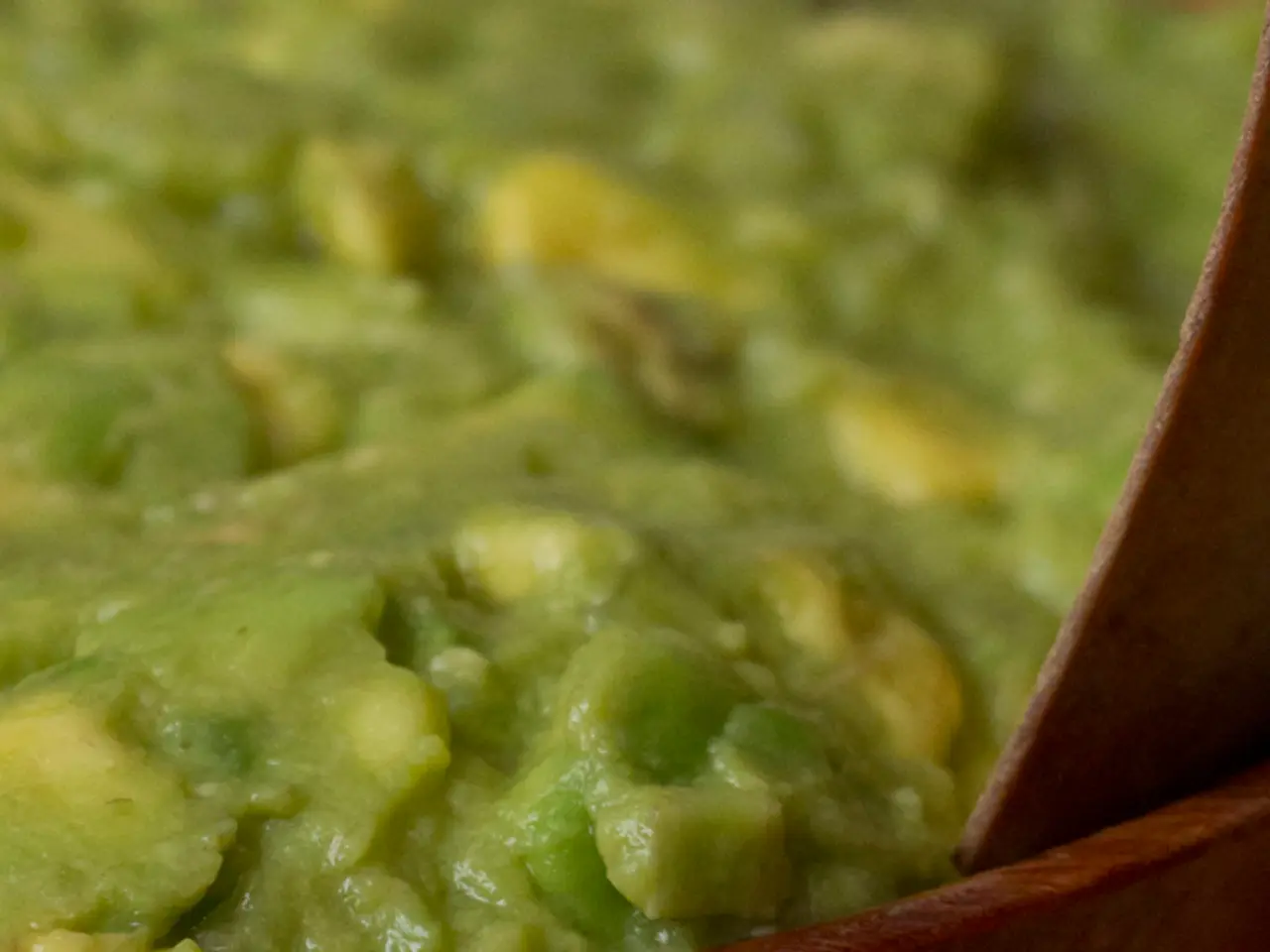Minimizing Heavy Metal Exposure in Baby Food
Essential Information on the Presence of Heavy Metals in Infant Formula
The U.S. Food and Drug Administration (FDA) has prioritized testing foods commonly eaten by babies and young children due to their vulnerability to heavy metal exposure. This is because heavy metals like arsenic, cadmium, lead, and mercury are naturally present in the earth's crust and can be found in the soil, water, and air.
One food group that requires particular attention is rice-based products, including rice cereal. Rice plants absorb heavy metals like arsenic from the soil more than other crops, making rice-based baby foods a potential source of heavy metal exposure. To minimize this risk, parents are advised to reduce or avoid rice-based products.
Instead, parents can opt for alternative grains such as quinoa, barley, couscous, or oats. These grains have been shown to have significantly less heavy metal contamination, up to 69% less than rice.
A diverse diet is also crucial in reducing heavy metal exposure. Fruits like apples, avocados, and bananas, and vegetables that are less prone to heavy metal accumulation should be included in a baby's diet. Preparing homemade purees and snacks when possible can also help lower the risk, as it allows parents to control the ingredients and avoid potential contamination in commercial products.
Parents should also be mindful of environmental sources of heavy metals such as old lead-based paint, contaminated water, and household dust.
The FDA's Closer to Zero initiative is ongoing, with expanded testing and research to reduce levels of heavy metals in food. This initiative was launched in 2021 with the aim to reduce exposure to contaminants in food eaten by babies and young children. The American Academy of Pediatrics (AAP) also recommends cereal grains such as oatmeal, barley, and multigrain as alternatives to rice cereal for a baby's first food.
While the levels of heavy metals detected in baby food are typically too low to cause damage, it's important to remember that even small amounts can add up over time. Therefore, it's crucial to provide children with a healthy variety of foods, in moderation, so they aren't eating too much of one thing.
In addition to federal initiatives, upcoming regulations like the Baby Food Safety Act of 2024, and state laws are aiming to reduce heavy metals in baby foods. Parents are encouraged to stay informed about baby food testing and recalls, especially with recent laws like California’s AB-899 requiring manufacturers to test for heavy metals and publish results online.
In summary, parents can minimize their baby’s heavy metal exposure by avoiding rice-based products, choosing diverse and alternative grain options, preparing homemade foods when feasible, and monitoring environmental exposures while staying informed about regulatory developments and product testing results.
- The FDA prioritizes testing foods frequently eaten by infants due to their susceptibility to heavy metal exposure.
- Arsenic, cadmium, lead, and mercury are naturally occurring heavy metals found in the earth's crust and can be found in soil, water, and air.
- Rice-based products like rice cereal require careful consideration due to their higher absorption of arsenic compared to other crops.
- Quinoa, barley, couscous, and oats are alternative grains with lower heavy metal contamination compared to rice.
- A diverse diet, including fruits like apples, avocados, and bananas, can help reduce heavy metal exposure.
- Preparing homemade purees and snacks can lower the risk of heavy metal exposure from commercial products.
- Parents should also be aware of environmental sources of heavy metals such as lead-based paint, contaminated water, and dust.
- The FDA's Closer to Zero initiative aims to reduce heavy metal levels in food aiming at babies and young children.
- The American Academy of Pediatrics recommends oatmeal, barley, and multigrain as alternatives to rice cereal for a baby's first food.
- Even small amounts of heavy metals can accumulate over time, emphasizing the importance of moderation.
- Upcoming regulations like the Baby Food Safety Act of 2024 aim to minimize heavy metals in baby foods.
- State laws are also being enacted to handle heavy metal issues in baby foods, such as California’s AB-899.
- Parents are advised to stay updated on baby food testing and recalls, especially with the implementation of new laws.
- News about the militant approach to heavy metals in baby food can help keep parents informed and vigilant.
- Medical conditions such as chronic diseases, autoimmune disorders, and neurological disorders may be exacerbated by heavy metal exposure.
- Environmental science research plays a crucial role in understanding the impact of heavy metal exposure on human health and the environment.
- Climate change also influences heavy metal pollution, as changes in weather patterns can lead to the migration of pollutants.
- The manufacturing industry is a significant contributor to heavy metal pollution, as industrial processes can release harmful substances into the air, soil, and water.
- Workplace-wellness programs can help reduce exposure to heavy metals in the workplace through appropriate handling, disposal, and ventilation practices.
- Cancers, respiratory conditions, and digestive health issues are known medical complications associated with heavy metal exposure.
- Eye health, hearing, and skin health can also be negatively affected by long-term exposure to heavy metals.
- Health-and-wellness apps can provide tips and resources for reducing heavy metal exposure through diet, exercise, and lifestyle choices.
- Fitness-and-exercise routines, including outdoor living and gardening, can improve overall health and help mitigate the effects of heavy metal exposure.
- Therapies-and-treatments such as chelation therapy can help remove heavy metals from the body, but should be used under a doctor's supervision.
- Proper nutrition, including adequate intake of essential vitamins and minerals, can enhance the body's ability to detoxify itself from heavy metals.
- Aging, men's health, and women's health are affected differently by heavy metal exposure, with unique challenges and considerations for each gender.
- Cardiovascular health is a significant concern with long-term heavy metal exposure, as it can affect the heart and blood vessels.
- The finance industry, including retirement planning, investments, and wealth management, can play a role in addressing heavy metal exposure through sustainable investing practices.
- Smart-home devices, gadgets, and wearables can contribute to a healthier home environment by monitoring air quality, water quality, and energy consumption, ultimately minimizing exposure to heavy metals.




